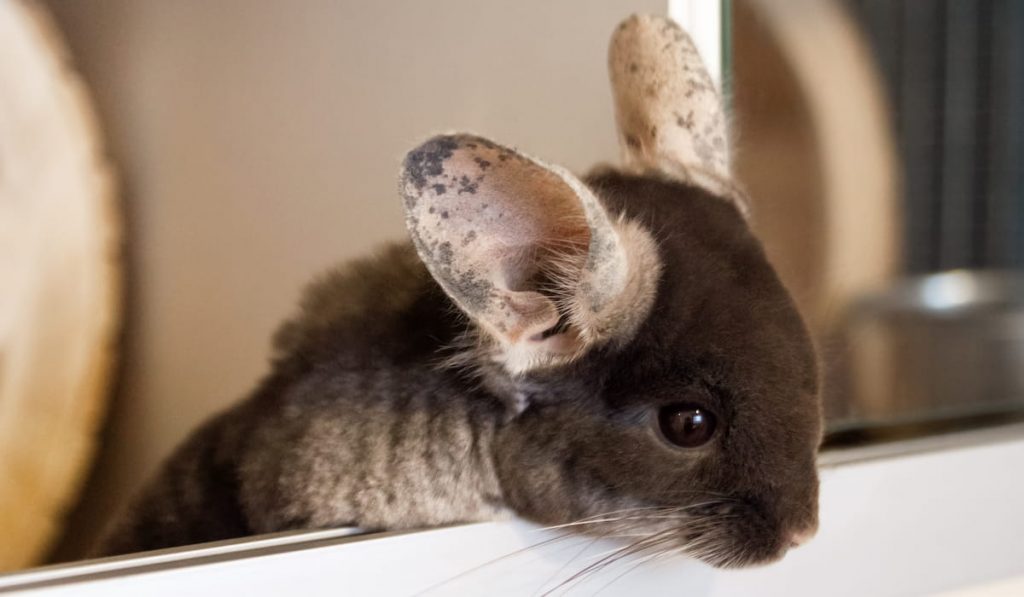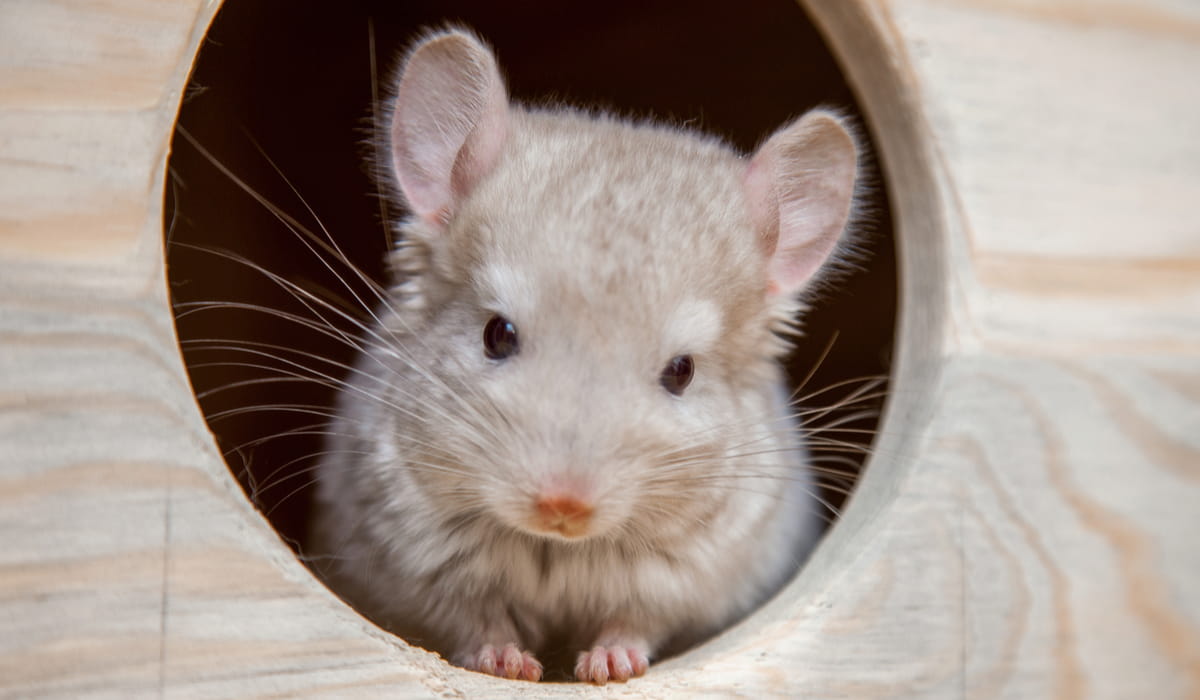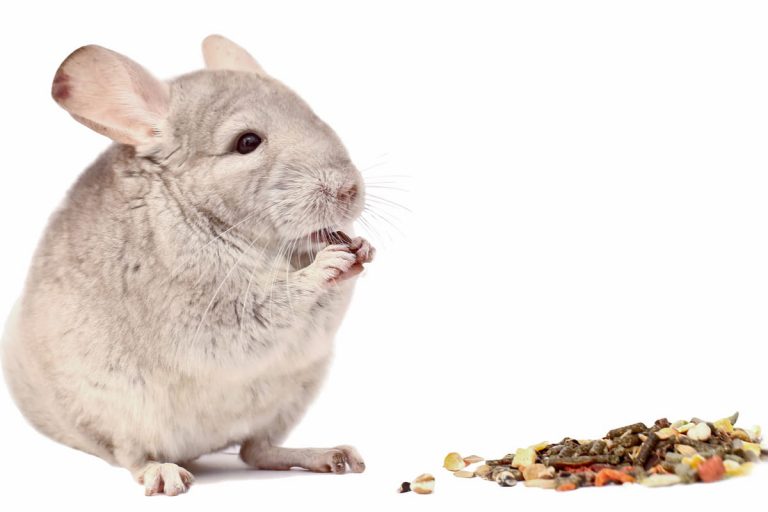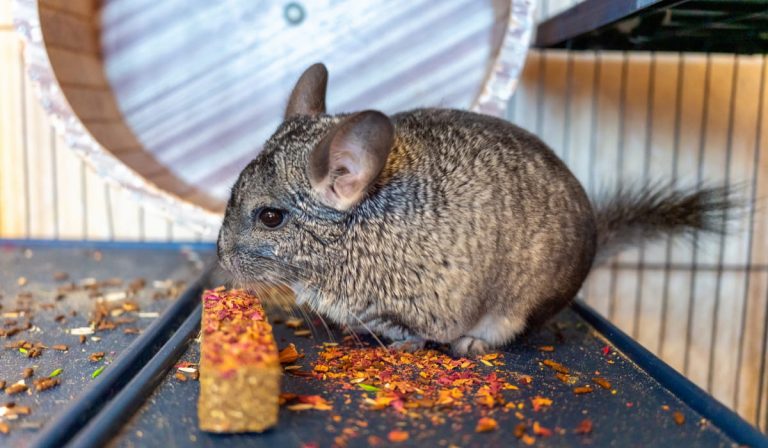Can Chinchillas Get Fleas?
Flea infestation is one of the major health issues that most pet owners face, especially when they have pets with thick fur.
Chinchillas can get fleas, but it is typically rare. Their dense fur is susceptible to a flea attack.
Contrary to popular belief, chinchillas’ fur is similar to the fur of other animals like cats and dogs. Some people believe that chinchillas’ fur chokes and repels fleas but these myths are not true.
Their small body doesn’t make them less likely to be infected with fleas. In fact, the more fleas they have on their fur and skin, the more likely they will face major health problems like parasitic infection and loss of blood.

Fleas are parasites or bloodsucking insects that feed on their host for nutrients through sharp spikes on their mouths. These spikes pierce through their host’s skin, which they use to suck on the blood.
Preventing a flea infestation on Chinchillas can take a lot of work but with the right steps, you will avoid further diseases that are carried by these blood-sucking insects.
Why Are Fleas Rare for Chinchillas?
Chinchillas rarely get fleas due to their living environment.
Most Chinchillas owners always keep their pets in a cage away from other animals like cats and dogs. They also try their best to not let their other pets inside the room or anywhere where the cage is placed.
However, some of these animals might wander around when they are out of sight or when their owner is out of the house.
This is when the fleas on their body might jump and land near the Chinchillas’ cage.
Once in a while, when you let the Chinchillas out of the cage, they will run around the room and face the risk of catching fleas. Although this rarely happens, it is still possible for them to get caught by these blood-sucking insects.

Signs Of Fleas On Chinchillas
Given that the adult flea size is only an eighth of an inch long, it is quite hard to detect the presence of fleas on Chinchillas’ fur with just a quick glance.
With a thorough check on their fur, you will notice some bugs that look similar to a headpin. These are a few signs you could watch for that point to a flea infestation on your cute pets:
- Excessive itching and scratching-Like other animals with dense fur, this is the first visible sign of a flea infestation. Chinchillas will scratch intensely due to irritable flea bites. They will try to relieve this uncomfortable itchiness in any way they could.
In some cases, normal scratching on different parts of their bodies might not be a sign of flea bites. However, if you notice they keep scratching the same spot, then it is time to check for any presence of fleas under their fur.
- Loss of fur-Chinchillas can suffer from alopecia when they scratch their fur too much. They will also bite the same spots on their skin and tug on their fur to relieve the itchiness. This will result in loss of fur and exposed skin.
In turn, it will be easier for more fleas to gather and infect these bald patches and they are able to suck more blood on these areas of skin because there is no fur to restrict their movement.
- Presence of flea dirt-Flea dirt is excrement produce by these blood-sucking insects. This dirt will appear in the form of dried blood or tiny, black specks that can be found in Chinchillas’ fur. It feels grainy and resembles dandruff that is hard to get rid of.
- Presence of flea bites-Signs of flea bites appear on Chinchillas’ skin in a form of red, bumpy, and inflamed skin. You can look for flea bites by slowly combing their fur. Be sure to monitor any spot on their bodies with slightly exposed skin that shows they have been scratching the affected areas too much.
Constant scratching due to irritations will leave their skin sore and slightly more reddish in color than usual.
- Presence of flea eggs-Flea eggs are hard to detect if you don’t closely look for them. They are white, oval-shaped, and resemble a grain of salt.
Female fleas can lay up to 20 eggs at a time. These eggs will be released on Chinchillas’ fur or any warm spot of their host.
- Visible fleas on the fur-Although Chinchillas’ fur is quite thick, it isn’t impossible to detect the presence of fleas underneath their luscious coat.
In some cases, you will notice fleas coming out and crawl around the edges of the fur. This is where you can catch and get rid of them quickly before they multiply.

Treating a Flea Infestation On Chinchillas
Preventing your Chinchillas from catching fleas is always be the best move to avoid further health issues. However, if they do catch fleas, you can treat them.
Here are some steps you can take:
1. Using A Flea Comb
You can buy a flea comb at any pet store or animal clinic. By using these combs, you can eradicate fleas that are sticking on Chinchillas’ fur.
Be sure to use it carefully because of the thickness of their fur. Avoid running these combs across tangled fur to avoid hair loss and injury to Chinchillas’ skin.
2. Scheduling A Regular Dust Bath
A regular dust bath is one of the easiest ways to remove fleas from Chinchillas’ fur. Chinchilla dust is an effective pest treatment because it helps in reducing the size of infestation on the fur.
All you have to do is let your pets roll around in the dust. When the dust sticks to the fur, fleas will have a problem holding on to it.
Scheduling a dust bath at least twice a week is enough to prevent a flea infestation on their body.
3. Avoid Using A Flea Collar
Many pet owners will use a flea collar on their cats or dogs. However, this is not suitable for Chinchillas. This collar is poisonous and certain side effects might appear on your pets.
Also, there is no proven track record that Chinchillas owners have successfully used flea collars to prevent flea infestations.

4. Cleaning Chinchillas Cage Regularly
Fleas love to hide in places that aren’t visible to human eyes. So, be sure to clean your Chinchillas’ cage regularly.
There is no better way than having their cage squeaky clean and free from any potential harm because they will be spending most of their time in the cage.
You can use a small vacuum cleaner to suck out all the debris that might contain flea eggs or specks of dirt. Also, you can use antiseptic cleaner or bleach when cleaning their cage. Just be sure to let the cage dry before putting your Chinchilla back in.
5. Asking Your Vet For Prescriptions
There is nothing better than consulting a professional veterinarian to treat your pet. Experienced Chinchillas owners know that there are some degrees of fleas infestation that can’t be treated at home.
When you consult veterinarians for prescriptions, they usually will prescribe a dosage of ivermectin or selamectin. These medicines are used to treat parasites infestation on animals and home pets. Plus, your pets won’t experience any side effects from these prescriptions.
On the other hand, if the infestation level is not that severe, veterinarians will suggest a flea shampoo.
These shampoos are safe for Chinchillas because they don’t contain chemicals like permethrins or pyrethrins that could induce hair loss or skin damage.

Final Thoughts
Left untreated, fleas can reproduce rapidly and make Chinchillas sick.
Removing fleas from your pets might be a hard thing to do but once you do, preventing this issue from happening again is always what you should be focusing on.
Another reason to eradicate fleas from your environment is that they can also get on to humans.
As always, keep your pets and your house clean and this problem can definitely be solved.
Resources
- https://planetchinchilla.com/can-chinchillas-get-fleas/
- https://chinchillacaregroup.com/can-my-chinchilla-get-fleas/
- https://ourfunkypets.com/can-chinchillas-get-fleas/
- https://smallpetshq.com/can-chinchillas-get-fleas-and-how-to-get-rid-of-it/
- https://neeness.com/can-chinchillas-get-fleas/
- https://petsoid.com/can-chinchillas-get-fleas/
- https://lovemychinchilla.com/chinchilla-fleas-myths-facts-treatments/







